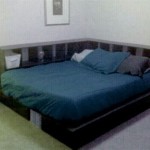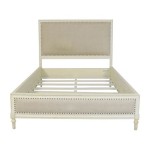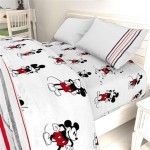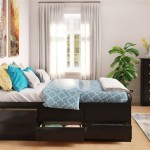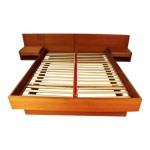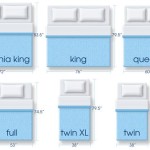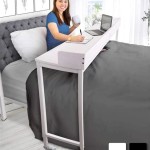Essential Aspects of Single Bed Bunk Size
The size of a single bed bunk is of utmost importance to ensure comfort and space efficiency. Understanding the essential aspects of bunk bed sizes allows for an informed decision when choosing the right fit for a specific space. This article will delve into the crucial factors to consider when selecting a single bed bunk size. ### Dimensions: The dimensions of a single bed bunk determine its sleeping area and overall footprint. Standard single bed bunk sizes typically range from twin to full-size. Twin-size bunks are narrower, measuring around 39 inches wide and 75 inches long, while full-size bunks are wider, measuring approximately 54 inches wide and 75 inches long. Choosing the right size depends on the available space and the size of the individuals using the bunk. ### Height: The height of a single bed bunk determines the vertical space it occupies and the clearance between the bed and the ceiling. Bunk beds come in various heights, from low-profile bunks with a bed height of around 5 feet to taller bunks with a bed height of 6 feet or more. The height should be considered based on the ceiling height of the room and the height of the individuals using the bunk. ### Weight Capacity: The weight capacity of a single bed bunk indicates the maximum weight it can support safely. Bunk beds are typically designed to accommodate a certain weight limit, ranging from 250 to 350 pounds per bed. Exceeding the weight capacity can compromise the bunk's stability and safety. It is essential to check the weight capacity before purchasing a bunk bed to ensure it meets the intended use. ### Ladder Type: The ladder type plays a significant role in the safety and accessibility of a single bed bunk. Bunk beds can feature various types of ladders, including built-in ladders, attached ladders, and portable ladders. Built-in ladders are permanently attached to the bunk and provide direct access to the upper bunk. Attached ladders are mounted on the side of the bunk and are foldable or removable. Portable ladders can be placed or removed as needed and offer flexibility in bunk configuration. The ladder type should be selected based on space constraints, ease of use, and safety considerations. ### Material: The material used to construct a single bed bunk can impact its durability, stability, and aesthetics. Bunk beds are primarily made from wood, metal, or a combination of both. Wood bunks offer a classic and cozy look, but they can be heavier than metal bunks. Metal bunks are lighter, more durable, and less susceptible to damage or warping. The choice of material depends on the desired style, weight, and durability requirements. ### Safety Features: Safety is paramount when selecting a single bed bunk. Look for bunks equipped with safety features such as guardrails on both sides of the upper bunk to prevent accidental falls. Anti-tip hardware is also crucial to ensure the bunk remains stable and does not tip over. Ensure the bunk meets all relevant safety standards and regulations before purchasing. ### Conclusion: Understanding the essential aspects of single bed bunk size enables informed decision-making when selecting the right bunk for a specific space. By considering dimensions, height, weight capacity, ladder type, material, and safety features, one can choose a bunk bed that provides both comfort and safety.
Alavda Bunk Bed Single Natural Furniture Home Décor Fortytwo

Betty Double Decker Bed Super Single Lcf Furniture

2024 Bed Frame Sizes Mattress Dimensions B2c Furniture

Brooklyn Solid Wood Single Low Bunk Bed Picket Rail Custom Furniture Interiors

Suucokids X Trendyspace Super Single Size Bunk Bed For Children And Young S High Quality Study Table In Singapore

Suucokids X Trendyspace Super Single Size Bunk Bed For Children And Young S High Quality Study Table In Singapore

2024 Bed Frame Sizes Mattress Dimensions B2c Furniture

Barnley Single Over Queen Storage Bunk Bed In Dark Walnut Finish Urban Ladder

Triple Bunk Bed Children

High Bunk Bed For Kids And S
